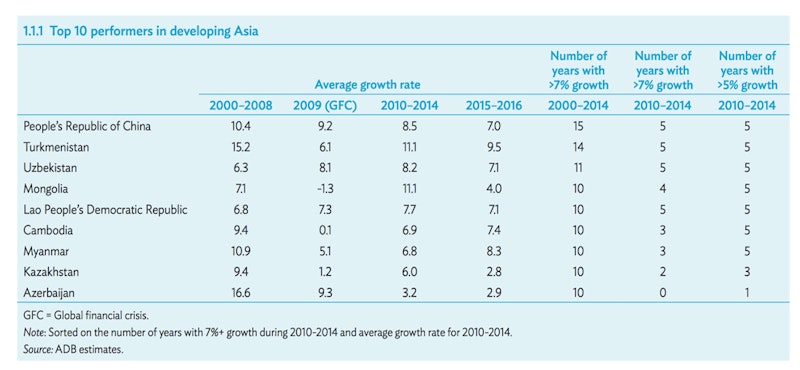Study Notes
ASEAN
- Level:
- A-Level, IB
- Board:
- AQA, Edexcel, OCR, IB, Eduqas, WJEC
Last updated 22 Mar 2021
ASEAN is a trade bloc of 10 nations with an aggregate economic size of $2.3 trillion. The aim is to establish a fully-fledged economic community (AEC) by the end of 2015
The ASEAN trading bloc's diversity – ranging from advanced economies like Singapore to developing countries like Myanmar is an interesting and important feature – who will be the winners and losers from deeper economic integration in the region?
Current members;
Association of Southeast Asian Nations (Brunei Darussalam, Cambodia, Indonesia, Lao P.D.R., Malaysia, Myanmar, Philippines, Singapore, Thailand, Vietnam)
Economic Background to ASEAN
- ASEAN is a middle-income region but with big differences in per capita incomes
- Countries such as Singapore and Brunei enjoy a very high GDP per capita at around $49,000 and $39,000, respectively, on par with the top tier of developed-market economies.
- In contrast, Myanmar and Cambodia have a GDP per capita (PPP adjusted) of just below $900.
- The ASEAN region has a population of over 600 million, roughly half that of China's or India's and around 9% of the world's total
- ASEAN's combined GDP of USD 2.3 trillion in 2012 is around 30% the size of China's, roughly the same size as that of the UK and 25% larger than India's. ASEAN GDP =3% of the world's total
- 25% of ASEAN trade is intra-regional trade – the aim is to increase this as economic ties deepen and also for a rise in intra-regional FDI flows
- China has emerged as the No. 1 trading partner for ASEAN
- 5 “ASEAN+1" free-trade agreements have been signed, with China, Japan, Korea, India and Australia/New Zealand respectively
The basics of a single market / economic community
As part of the ASEAN integration plans, barriers to trade in goods and services will be brought down or kept to a minimum.
Flows of investment, capital and skilled labour will be facilitated and co-operation in sectors designated as priority integration sectors will be promoted.
- Free flow of goods and services
- Freer flow of capital and the Free flow of skilled labour
- Priority integration sectors
- Food, agriculture and forestry
This will be added to by establishing regional standards for competition policy, Consumer protection, Intellectual property rights, taxation and e-commerce
The ASEAN Infrastructure Fund was established with the Asian Development Bank to fund physical infrastructure projects in ASEAN. An example is the building of a new high speed railway between Malaysia and Singapore.

You might also like
International Trade
Study Notes
Sources of Comparative Advantage
Study Notes
Economic and Social Benefits from Trade
Study Notes

Growth and Development in Ethiopia
17th October 2014
Chinese FDI in Africa
15th May 2014

Russia Joins the WTO
22nd January 2012
Benefits and Costs of Globalisation
Study Notes
Sovereign Wealth Funds
Study Notes